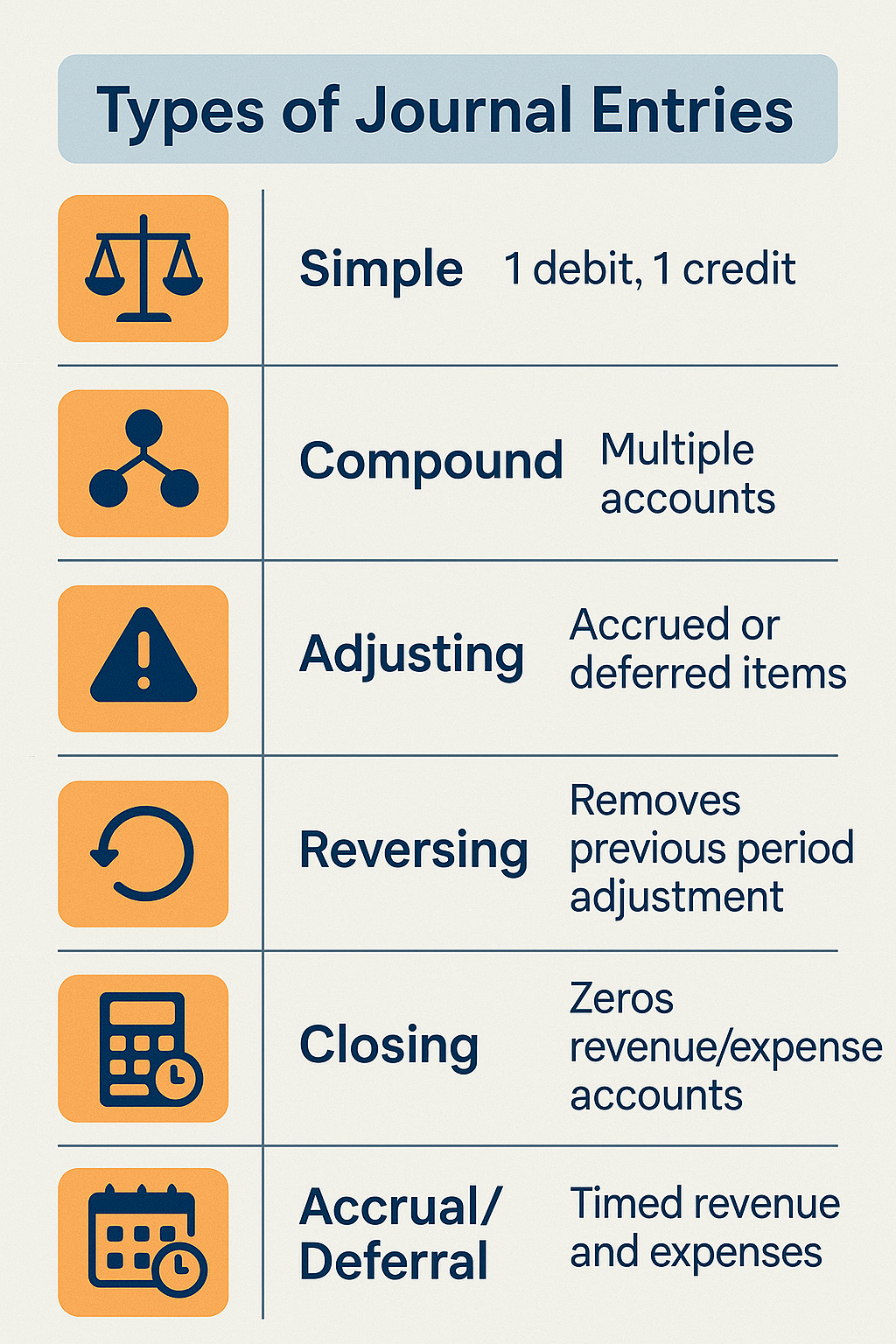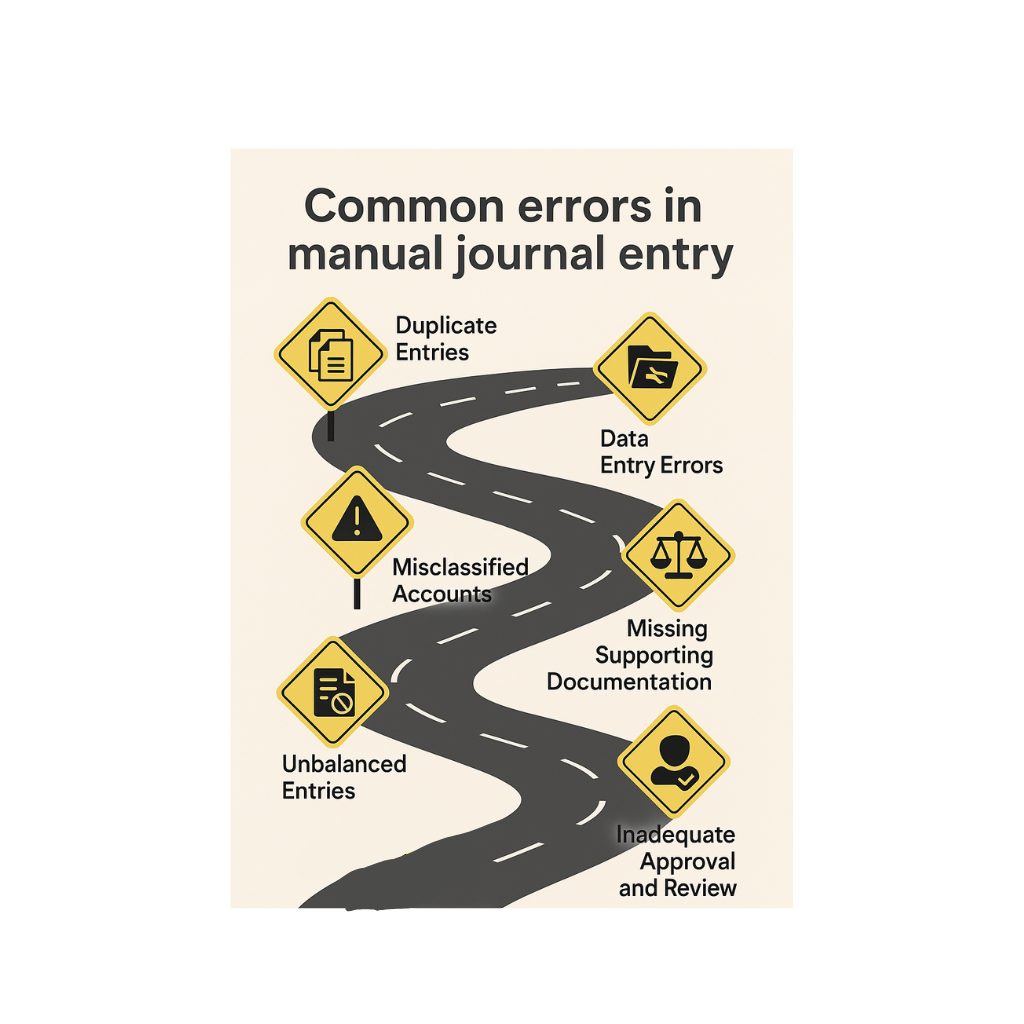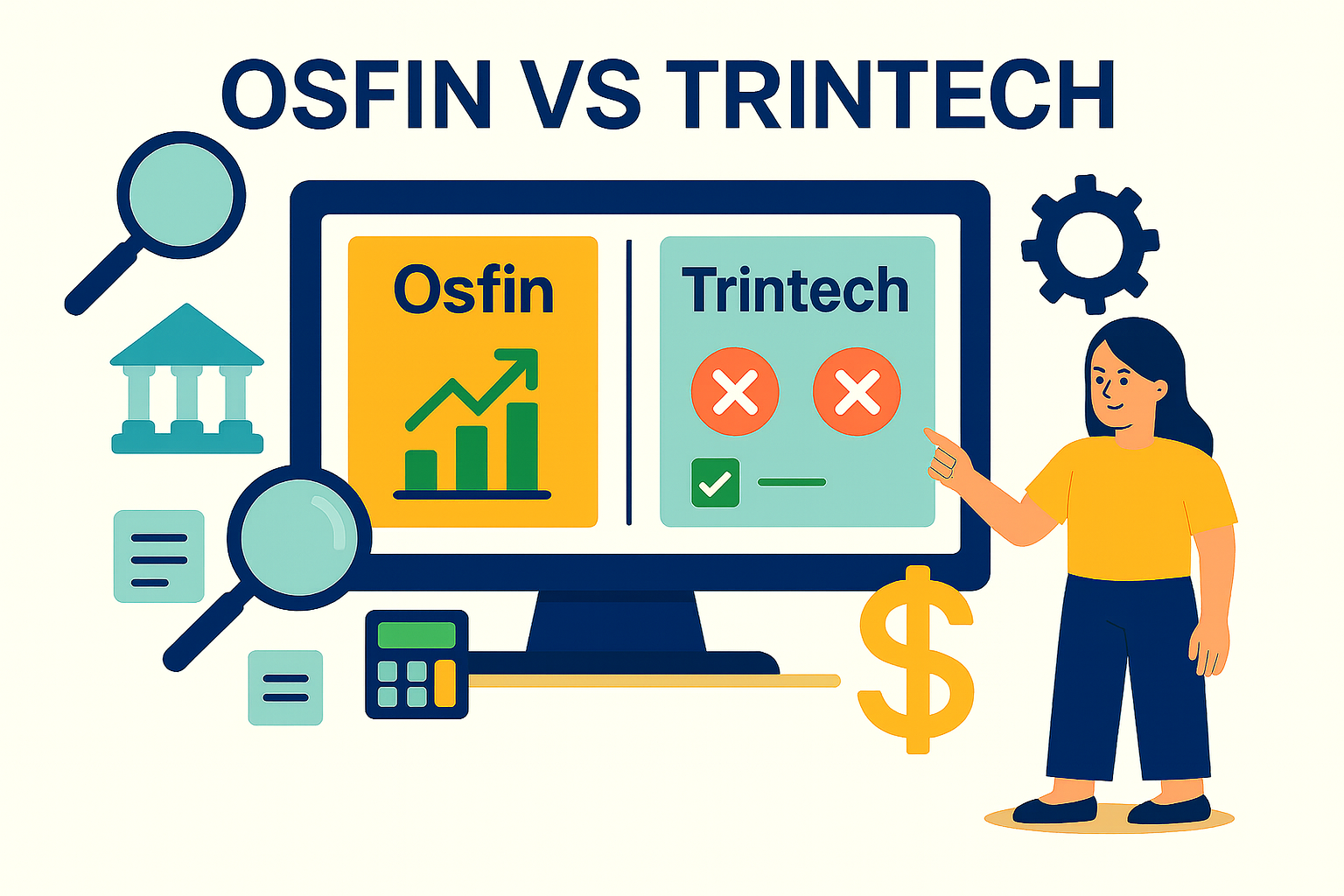What Is a Journal Entry in Accounting? A Guide
Imagine this: someone posts a journal entry with an incorrect debit value and it only gets caught at the last minute, causing a massive ripple effect that delays month-end reconciliations and closes, and also forces finance teams into tedious investigations just to identify and fix the error. The problem is that it’s not an isolated incident and is in fact a common scenario in organizations.
A recent Gartner research revealed that 59% of accountants make several financial errors every month, driven by repetitive, manual journal posting and approval workflows. These errors cost time, inflate reconciliation backlogs, and force leaders to reroute resources from strategic analysis towards routine corrections.
This also raises the necessity of a proper understanding of journal entries in accounting, including what they are and how they function as the foundation of every financial record, report, and reconciliation.
This article breaks down what are journal entries in accounting, journal entry fundamentals, outlines key entry types, how to do journal entries in accounting and details controls for tracking each posting. It also explains best practices for managing journal workflows and shows how to automate journal entry processes in accounting to improve real-time validations, rule-based approvals, and audit-ready trails.
What is Journal Entry in Accounting?
Keeping a regular and updated log of every business transaction is what defines a journal entry in accounting. The records include fields like the transaction date, the accounts debited and credited, and precise amounts. The objective is to ensure each entry is made correctly so totals on both sides match. Each entry includes a concise description and supporting documents such as invoices, bills, and payment confirmations.
Journal entries are a significant and valuable part of the general ledger, which combines these records into the balance sheet, income statement, and cash-flow reports. When entries are incorrect or delayed, finance teams have to deal with reconciliation backlogs, audit flags, and compliance gaps.
The manual process of adding entries begins with a transaction marker, such as an invoice or or bank statement, followed by manual data entry into the accounting system. After this, the finance team validates the entry, obtains necessary approvals, and updates the journal before adding it to the ledger. However, manual journal entries carry high error rates that delay month-end closes and inflate compliance costs.
What Is the Purpose of a Journal Entry?
Journal entries in accounting transform raw transaction reports into structured records to enforce accuracy and control across financial operations as they are the foundational structure for every financial report and audit. Here are the reasons why they are important in accounting processes:
1. Transaction Recording
A journal entry in accounting records every financial action at its source by capturing key details like transaction date, credit and debit accounts and amounts to ensure complete and accurate transaction data entered into the general ledger without gaps. This step is crucial for finance teams looking to avoid reconciliation bottlenecks and maintain data integrity across systems.
2. Financial Control and Compliance
Each journal entry in account creates a balanced ledger by matching debits and credits to prevent errors and misstatements to help align records with GAAP and IFRS standards. This reduces audit exceptions and regulatory risks as properly maintained journal entries lower compliance costs.
3. Audit Trail and Transparency
Journal entries in accounting leads to transparent tallying of financial statements with supporting documents which simplifies external audits and internal reviews. Regularly tracking and logging these entries also helps you save time consumed on marking audit trails at month-end.
4. Decision Support and Reporting
Accurate and timely journal entries contribute accurate and reliable data to financial reports that are used by CFOs and controllers for variance analysis and strategic decision-making without the delays caused by reworks and data cleanup.
5. Operational Efficiency and Risk Mitigation
Effective journal entries integrate controls that monitor exceptions and automate validations to reduce manual errors and to free finance teams so they can focus on high-value tasks. Automation ensures consistent accuracy and accelerates financial closes which are essential for scalable finance operations.
{{banner1}}
Journal Entries for Real-Time Payments & Fintech Ops
The process of adding journal entries in accounts has to evolve as real-time payments reshape how finance teams capture and reconcile transactions. Unlike traditional batch processes, real-time payments settle within seconds which means every journal entry in accounting must reflect data that’s immediate, accurate and granular. Delays or errors can trigger breakages across the payment lifecycle, making robust journal workflows essential.
Platforms handling real-time or cross-border payments rely on these very journal entries to log transaction details, such as payer and payee credentials, timestamps, and compliance metadata, including all requirements stated under standards like ISO 20022. Every entry must include the source, purpose, and verification made clear enough for both internal and external audits.
Manual posting methods struggle to keep up with large real-time payment volumes as each missed or delayed entry creates discrepancies between available balances and ledger records, forcing teams into error investigation, which in turn slows down closing cycles and increases compliance costs.
By integrating automation, teams can create a journal entry in accounting that is optimized for real-time payments to reduce errors, flag exceptions instantly, and create a transparent audit trail for every transaction. As payment platforms and financial institutions expand their operations globally and the speed of settlement increases, accurate and timely journal entries in accounting become the groundwork for trust and regulatory compliance.
{{banner1.1}}
Types of Journal Entries
Effective finance operations depend on correctly distinguishing between journal entry categories and applying the right process controls as each type serves distinct operational needs that vary from routine revenue recognition to period-end adjustments. Understanding the six types of journal entries mentioned below is crucial if you want to know how to make a journal entry in accounting.
1. Simple Journal Entry
A simple journal entry can affect both debit and credit accounts for it records straightforward transactions such as a cash purchase or even a sale on credit. This type of entry acts as the backbone of daily record keeping and ensures that basic transactions are maintained accurately to the ledger.
2. Compound Journal Entry
Compound entries involve multiple debits and credits from more than two accounts. This type of journal entries address the need for financial record keeping to ensure accuracy, control and audit compliance. Compound journal entries log complex transactions in a single posting to reduce the number of individual entries.
3. Adjusting Journal Entry
Adjusting entries means updating accounts to reflect costs or income that have been transacted but not recorded yet. Keeping them consistent supports compliance to prevent significant errors.
4. Reversing Journal Entry
Reversing entries cancel out specific adjusting entries at the start of a new period as they ease recording routine transactions by removing prior accruals like payroll or expenses. This prevents double counting when actual invoices or payments arrive.
5. Closing Journal Entry
Closing entries transfer balances from temporary accounts into retained earnings or capital accounts at period-end. Their accuracy is critical for clean opening balances and reliable comparative reporting as they mark the closing of one accounting cycle and the beginning of the next while supporting transparent stakeholder disclosures.
6. Accrual and Deferral Entries
Accrual entries recognize earned revenue or incurred expenses before cash changes hands. Deferral entries postpone recognition until associated revenue or expense criteria are met. Properly executed accruals and deferrals prevent timing mismatches and uphold the integrity of financial statements for finance leaders and auditors.
{{banner3.1}}

What Does a Journal Entry Look Like in Accounting?
Explanation:
- Date: Marks the exact transaction date to allow for chronological date-wise tracking.
- Account Names: Lists the debit and credit bank accounts involved in the transaction to help identify the flow of funds.
- L/F (Ledger Folio): This column contains the reference number or code linking the journal entry to its corresponding ledger posting to facilitate cross-referencing during audits and reconciliations.
- Debit Amount: Shows the monetary amount debited in the transaction. Debits represent value entering an account based on accounting rules.
- Credit Amount: Displays the amount credited, representing value leaving the corresponding account. Each journal entry must balance total debits and credits.
Common Mistakes in Manual Journal Entry

Manual journal entry processes are subject to errors that can disrupt financial accuracy and create compliance headaches even for experienced teams. Problems keep occurring when workflows aren’t controlled, leading to time-consuming investigations, late closes, and unnecessary risk. Here are the most common mistakes encountered by finance teams even though they know how to create a journal entry in accounting.
1. Duplicate Entries
Re-entering the same transaction especially during periods of high volume, leads to double counting and incorrect account balances. Duplicates inflate workloads for reconciliation and correction.
2. Data Entry Errors
Typos, misplaced decimals, or reversed figures are frequent issues in manual posting. These small errors often cause reconciliation mismatches and require extra effort to trace and fix during the close process.
3. Misclassified Accounts
Transactions are sometimes entered in the wrong account, either due to unclear account codes or lack of training. Misclassification disrupts the reporting process and can lead to wrongly stated financial details which directly impacts management decisions.
4. Missing Supporting Documentation
If source documents like invoices or contracts are missed or wrongly linked, it causes a break in the audit trails and slows down reviews, thus, increasing the risk of compliance exceptions.
5. Unbalanced Entries
Manual entries sometimes post without balancing debits and credits. This oversight introduces immediate errors that propagate across the general ledger, resulting in delayed closes and more manual investigation work.
6. Inadequate Approval and Review
Skipping required validation steps or approvals leaves undetected errors that get flagged later in the process. Inconsistent review practices dilute internal controls and can cause compliance failures.
How to Track and Manage Journal Entries?
Keeping a clear handle on journal entries in accounting means improved audit trails and less time wasted in correcting records or awaiting approvals. Below are the steps that you can apply to track and manage your journal entries efficiently.
1. Centralize the Register
Move all journal entries whether they are open, posted, or exceptions into a single, always-updated register. Every record should show date, account, amounts, approver, and a direct link to supporting docs. If a question comes up, the answers are in one place, not scattered across inboxes or spreadsheets.
2. Build Workflows for Real Approvals
Don’t let the same person prep and approve because every journal entry in accounting should have clear ownership for who creates, reviews, and signs off, with automated workflows routing entries to the right queue. Real approval processes spot exceptions early and protect audit integrity.
3. Require Documentation Upfront
Attach every invoice, contract, or reference document while making the first log and not later in cleanup. Linked files prove the purpose and validity of each line, making reviews and audits quick and stress-free.
4. Make Reconciliations Routine
Match your journal entry log to the ledger on a daily schedule instead of getting to it during the month-end. Daily reconciliation helps you catch gaps, duplications or missing approvals before they cause closing delays or reporting risk.
5. Track Exceptions, Not Just Entries
Set notifications for exceptions such as large entries, odd timing, or account combos that don’t fit usual patterns. Always track who made changes and when along with audit logs that keep the ownership history clear to support compliance and operational checks.
6. Automate Where It Matters
Use automation for routing, validation and documentation matches to keep the entry visible in the accounting pipeline. Dashboards should give real-time status and flag any hanging approvals well in time.
Why Journal Entry Automation is Key to Scalable Accounting?
Manual journal entry processes may struggle to match with the pace and complexity of modern finance. Automation delivers faster closes, fewer errors, and scalable control as transaction volumes among many other benefits as stated below.
- Manual journal entries take longer periods of time and are prone to errors, which is something automation significantly aids with by offering reduced manual workload and clearly assigned workflows.
- Automated workflows check and confirm entries in real-time by flagging exceptions as they happen and tracing every transaction to its source.
- Finance teams save hours of manually checking spreadsheets, searching for missing fields by allowing the automation system to cross-check data and assign approval duties.
- The need for accounting is growing across currencies and markets, therefore, automation helps with reconciling the data load without having to expand the employee count.
- Automated journal entry management keeps audit trails transparent and always ready so that when reworks or queries need to be addressed, you don't have to waste time on looking up the logs of who made what changes.
- Analysis, planning, and decision-making become easier given to clear and timely logs along with lack of errors.
- In a real-time financial environment, scalable accounting helps you stay ahead as entries are made the moment transactions happen. This closes cycles early and every number in the ledger accuracy and context.
Automating Reconciliation Workflows with Osfin
Modern finance demands real-time accuracy, control and end-to-end audit processes that are sometimes slowed down by manual processes and incorrect reconciliations. Osfin simplifies every step of reconciliation by condensing entries into a single, seamless system built for instant operations. This gives finance teams immediate visibility of transactions just as they happen without the delay of entering each detail manually.
Osfin can ingest any transaction data in near real-time in any format using its 170+ pre-built integrations across banks, ERPs, PSPs, wallets, lending platforms, and internal systems. As a file-format-agnostic platform, Osfin applies custom deviation tolerances, detects mismatched or duplicated entries at ingestion, and ensures only clean, high-quality data flows downstream.
Once ingested, every transaction is automatically matched, closed, and updated in-platform using advanced logic-based matching that supports one-to-many and many-to-one configurations. Osfin reconciles up to 30 million records in under 15 minutes, including gateway payouts with fee, tax, and commission breakdowns.
The platform instantly flags unmatched transactions, assigns contextual reasons, and routes them to the right team members. Live dashboards track every open, unmatched, or flagged journal entry allowing teams to access match rates, potential breaks and exceptions in real time, with every user action logged and traced for complete audit trails that meet standards like SOC 2, ISO 27001, PCI DSS, and GDPR.
Role-based access, full encryption, and complete traceability are also built in from the start to ensure compliance with global standards such as ACH Transfer, SWIFT, ISO 20022. With Osfin’s no-code rule builder, finance leads define custom logic for all journal and payment flows without waiting on IT.
Osfin reconciles with enterprise-grade speed and precision so you never lose speed as your business grows, whether you’re closing out monthly books, handling real-time brokerage trades, or keeping up with instant payment volumes. It drives speed, visibility, and accuracy at every step without requiring you to increase team size or complicating compliance.
{{banner3}}
FAQs on Journal Entry in Accounting
1. What is a general journal entry in accounting?
A general journal entry in accounting refers to the first record of any business transaction entered in the journal along with respective details such as date, credit and debit accounts, along with a brief description about the transaction.
2. What is the typical approval workflow for journal entries in accounting?
Segregate creation, review, and approval of entries. Use a structured workflow where only authorized personnel can approve, with automated checks and clear audit logs to support compliance.
3. Can automation handle multi-entity journal entries in accounting?
Yes, automated platforms process entries across subsidiaries, currencies, and account structures without manual intervention, ensuring consistency and accuracy even as organizations scale.
4. What documents should be attached to each journal entry in accounting?
Attach relevant source documents like invoices, contracts or payment confirmations for every entry to strengthen audit trails and make future reviews or audits more efficient.
5. How long should journal entries in accounting be retained for audit and compliance?
Retain journal entries and supporting documentation for at least seven years, or as required by local regulations, to ensure full auditability and regulatory compliance.


